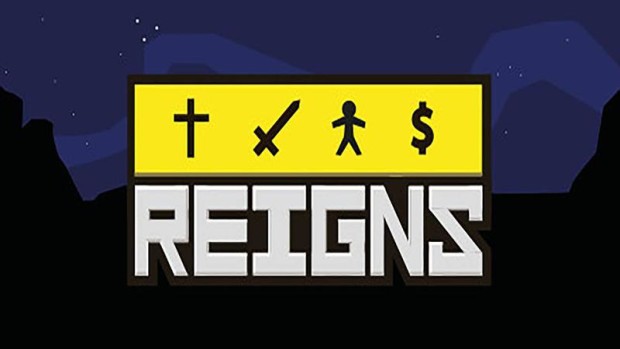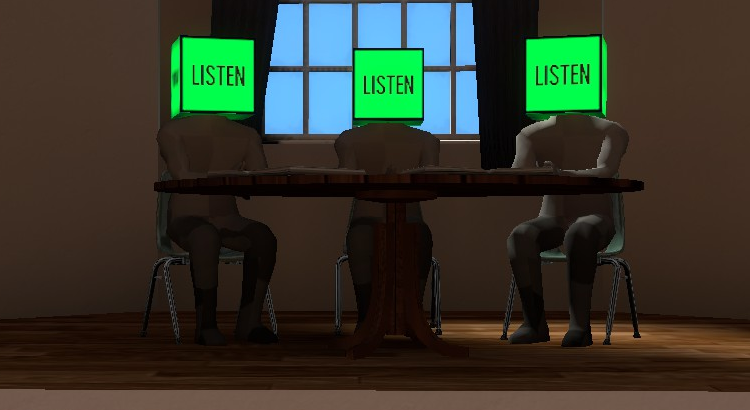I am a sucker for a good spy story. And when those spies are also cyberpunk hackers, then all the better. So when I discovered that Invisible, Inc. is a game that features such hacker-spies, suffice it to say I was pretty excited to play it.
 Invisible, Inc., developed by Klei Entertainment, is a turn-based stealth video game that features procedurally generated levels. The game follows the exploits of an espionage agency in the year 2074, an agency that has just come under attack from multinational corporations during a time in which megacorporations reign. As a result, as we begin the game, the crew is beaten and scattered, reduced down to a couple agents and Incognita, the agency’s sophisticated artificial intelligence system. In the aftermath of the attack, the team works to pick up the pieces by infiltrating various corporate headquarters in order to gather resources and prepare to relocate Incognita, currently operating on temporary backup power, to a more permanent location.
Invisible, Inc., developed by Klei Entertainment, is a turn-based stealth video game that features procedurally generated levels. The game follows the exploits of an espionage agency in the year 2074, an agency that has just come under attack from multinational corporations during a time in which megacorporations reign. As a result, as we begin the game, the crew is beaten and scattered, reduced down to a couple agents and Incognita, the agency’s sophisticated artificial intelligence system. In the aftermath of the attack, the team works to pick up the pieces by infiltrating various corporate headquarters in order to gather resources and prepare to relocate Incognita, currently operating on temporary backup power, to a more permanent location.
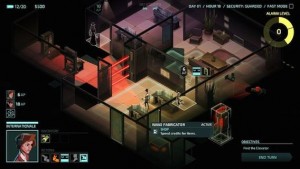 In the game, the player takes on the role of a remote operator, directing agents through each mission. And because the levels are procedurally generated, the details and layout of the missions’ locations, objectives, and obstacles vary, whether it’s searching for missing agents at a detention center in Kabul or infiltrating a server farm in Algiers for security programs to enhance Incognita’s abilities. On each level, missions are turn-based, and during the player’s turns each agent can perform certain stealthy tasks, such as sneaking from room to room, peeking through doors or around corners, or silently taking out a security guard. After the completion of the player’s turn, the enemy can then make their move, sounding alarms, heightening security, sending in more forces, activating security cameras and drones. Stealthiness, then, is imperative.
In the game, the player takes on the role of a remote operator, directing agents through each mission. And because the levels are procedurally generated, the details and layout of the missions’ locations, objectives, and obstacles vary, whether it’s searching for missing agents at a detention center in Kabul or infiltrating a server farm in Algiers for security programs to enhance Incognita’s abilities. On each level, missions are turn-based, and during the player’s turns each agent can perform certain stealthy tasks, such as sneaking from room to room, peeking through doors or around corners, or silently taking out a security guard. After the completion of the player’s turn, the enemy can then make their move, sounding alarms, heightening security, sending in more forces, activating security cameras and drones. Stealthiness, then, is imperative.
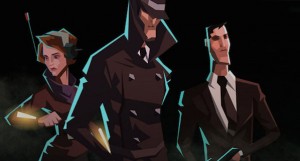 I’ve played a couple hours of the game now, and so far I am definitely enjoying myself. Invisible, Inc.’s overall aesthetics are really fun, incorporating the sleek lines and mod imagery of a 1960s spy movie, the brooding antiheroes of noir, and the alienating, dystopian setting and dominant technologies of the cyberpunk genre. The blended use of these stylistic conventions, coupled with the game’s soundtrack, sets the stage for Invisible, Inc.‘s suspenseful proceedings, an ambiance that is further enhanced by the manner in which the gameplay unfolds. Indeed, the pacing—not just during each individual level but also throughout the game as a whole—really seems to build up the tension quite nicely (and in a consistent, deliberate manner in keeping with seething, stealthy tension of the spy genre) through the use of devices like the rhythmic raising of alarm levels which brings more and increasingly challenging foes, the steady back and forth of the turn-based gameplay, and the fact that the game continually reminds us of the finite amount of time we have to complete our objectives through the foreboding prevalence of a countdown clock. In all these ways, it seems like the game itself has a sort of circadian rhythm, one predicated not on sleep cycles but on cycles of suspenseful espionage.
I’ve played a couple hours of the game now, and so far I am definitely enjoying myself. Invisible, Inc.’s overall aesthetics are really fun, incorporating the sleek lines and mod imagery of a 1960s spy movie, the brooding antiheroes of noir, and the alienating, dystopian setting and dominant technologies of the cyberpunk genre. The blended use of these stylistic conventions, coupled with the game’s soundtrack, sets the stage for Invisible, Inc.‘s suspenseful proceedings, an ambiance that is further enhanced by the manner in which the gameplay unfolds. Indeed, the pacing—not just during each individual level but also throughout the game as a whole—really seems to build up the tension quite nicely (and in a consistent, deliberate manner in keeping with seething, stealthy tension of the spy genre) through the use of devices like the rhythmic raising of alarm levels which brings more and increasingly challenging foes, the steady back and forth of the turn-based gameplay, and the fact that the game continually reminds us of the finite amount of time we have to complete our objectives through the foreboding prevalence of a countdown clock. In all these ways, it seems like the game itself has a sort of circadian rhythm, one predicated not on sleep cycles but on cycles of suspenseful espionage.
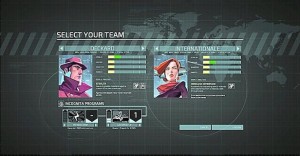 That said, it does seem to me that the characters that exist within this world could be improved upon. While each character I’ve encountered thus far appears to be representative of a certain aesthetic archetype, so far their characterization doesn’t seem to go much further than that; I’d like to see these characters more fleshed out and developed because getting to know them more could serve to enhance the manner in which I engage with the game. And speaking of interaction, I think the game could do a better job of having these characters, as members of a (super sneaky) team, work together during each level more cohesively and creatively in order to achieve each objective. By improving upon the characters in these ways (which I hope is something that may still occur in some way as I continue to play the game), Invisible, Inc. might then contain characters with a level of depth and connectivity that rivals the game’s mechanics and aesthetics.
That said, it does seem to me that the characters that exist within this world could be improved upon. While each character I’ve encountered thus far appears to be representative of a certain aesthetic archetype, so far their characterization doesn’t seem to go much further than that; I’d like to see these characters more fleshed out and developed because getting to know them more could serve to enhance the manner in which I engage with the game. And speaking of interaction, I think the game could do a better job of having these characters, as members of a (super sneaky) team, work together during each level more cohesively and creatively in order to achieve each objective. By improving upon the characters in these ways (which I hope is something that may still occur in some way as I continue to play the game), Invisible, Inc. might then contain characters with a level of depth and connectivity that rivals the game’s mechanics and aesthetics.
But in spite of this, I’m finding that I can’t tear myself away from the game (which is both a blessing and a curse, since I’m supposed to be working on last-minute preparations for my increasingly imminent wedding). So if you are as much of a fan of strategy-based stealthy gameplay, spy film aesthetics, cyberpunk dystopias, and anarchic commentaries on the potentially dangerous effects of the growth of multinational corporations as I am, then I recommend getting your hands on this game—especially since it’s currently on sale on Steam.

